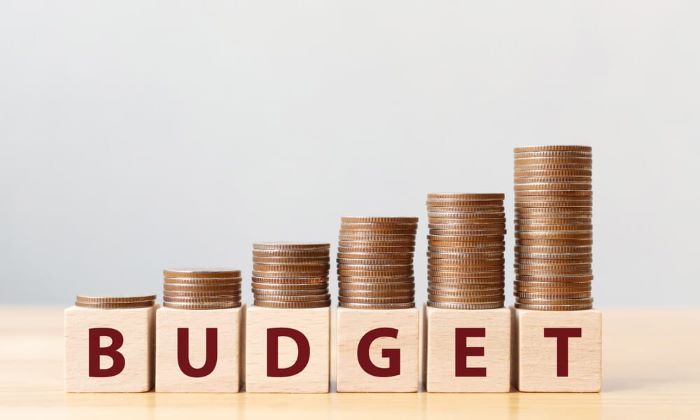The Union Budget of India, commonly referred to as the annual financial statement, is a significant event that determines the allocation of government funds for the upcoming year. Presented by the Finance Minister in the Parliament, the Union Budget aims to address the nation’s economic priorities and ensure the efficient use of resources. With Budget 2025 on the horizon, it is essential to understand its meaning, importance, and key components to grasp the broader economic picture it creates.
Meaning of Union Budget
The Union Budget is essentially a financial document that outlines the government’s plan for revenue generation, expenditure, and fiscal policies for the upcoming fiscal year. It is a comprehensive statement that showcases the government’s financial goals, its strategies to raise funds, and how it plans to spend these funds across various sectors like infrastructure, education, defense, healthcare, and more. The Budget is usually presented on February 1st each year, with the Union Finance Minister delivering the key highlights in Parliament.
The budget is divided into two major parts:
- Revenue Budget: This section focuses on the income the government expects to generate from taxes, loans, and other sources. It also details the expenditure needed for various ongoing services, subsidies, and operational costs.
- Capital Budget: This section focuses on the government’s long-term investments in capital goods such as infrastructure projects, roads, buildings, and other assets that can enhance the nation’s economic capacity.
Importance of the Union Budget
The Union Budget plays a crucial role in shaping the country’s economic direction. Here’s why it holds such significance:
- Economic Planning and Growth: The Union Budget outlines the government’s financial roadmap and sets the tone for economic growth. It allocates funds to sectors that need attention, fostering development and ensuring the country’s resources are used efficiently.
- Policy Implementation: The Budget is instrumental in implementing various government schemes and policies. It highlights how much will be invested in areas like education, healthcare, infrastructure, and public welfare. The allocation for these sectors often directly impacts citizens’ lives.
- Fiscal Health: The Union Budget also reflects the government’s efforts to maintain fiscal discipline by balancing its expenditure and revenue. A budget deficit or surplus is a key indicator of the government’s fiscal health and the overall economic stability of the country.
- Investor Confidence: A well-planned budget can boost investor confidence by ensuring a stable economic environment. It sends a positive signal to both domestic and foreign investors about the government’s priorities and its ability to manage the economy effectively.
- Public Spending and Subsidies: The budget outlines the allocation for various subsidies and grants, including those for food, fuel, and fertilizers. These allocations can directly influence the cost of living and the affordability of essential goods for citizens.
Key Insights for Budget 2025
As we approach Budget 2025, there are several key areas of focus that will likely shape the upcoming financial year:
- Infrastructure Development: The government is expected to continue prioritizing infrastructure projects such as highways, railways, and urban development. The Budget will likely allocate significant funds to improve connectivity and boost the economy through enhanced infrastructure.
- Healthcare and Education: Given the global emphasis on public health and education, the Budget may increase allocations for healthcare and education, particularly after the challenges posed by the COVID-19 pandemic. Investment in healthcare infrastructure, medical research, and educational reforms could be key components in Budget 2025.
- Green Initiatives and Sustainability: Environmental sustainability will likely be a focus of Budget 2025, with the government potentially investing in green energy projects, climate change mitigation efforts, and renewable energy technologies to support its long-term growth targets.
- Tax Reforms and Incentives: Tax reforms are often part of the Union Budget. The government may introduce measures to simplify the tax structure, reduce corporate tax rates, or offer incentives for industries to promote economic growth. These tax components play a vital role in attracting investments and boosting job creation.
- Social Welfare Programs: With a focus on uplifting the marginalized sections of society, the Union Budget may allocate funds for social welfare programs, including subsidies for the poor, housing schemes, and food security programs.
Budget Components
The Union Budget comprises several components that reflect the government’s financial strategies and priorities. Some of the main components include:
- Tax Proposals: These are changes in the tax rates or introduction of new taxes that affect individuals, businesses, and industries.
- Expenditure Proposals: These details the allocation of funds across various sectors such as defense, healthcare, education, rural development, and infrastructure.
- Fiscal Deficit Targets: The government sets a target for the fiscal deficit, which is the difference between the government’s expenditure and revenue. A higher deficit may lead to inflation, while a lower deficit signals fiscal discipline.
- Debt Management: The Budget outlines how the government plans to manage its existing debt and what measures will be taken to prevent an unsustainable debt burden.
- Economic Reforms: These proposals aim to improve the economic environment and create a conducive atmosphere for growth, such as easing regulations for businesses, providing incentives for new industries, or enhancing labor laws.
Conclusion
The Union Budget is more than just a financial statement; it’s a blueprint for the country’s future. With Budget 2025 on the horizon, citizens, businesses, and investors eagerly await the government’s plans to steer India toward sustainable economic growth. The key components of the Budget will play a pivotal role in determining the trajectory of the nation’s development, as well as its fiscal health. Understanding the budget component and their implications is vital for everyone to stay informed and involved in the financial decision-making processes that shape the economy.

